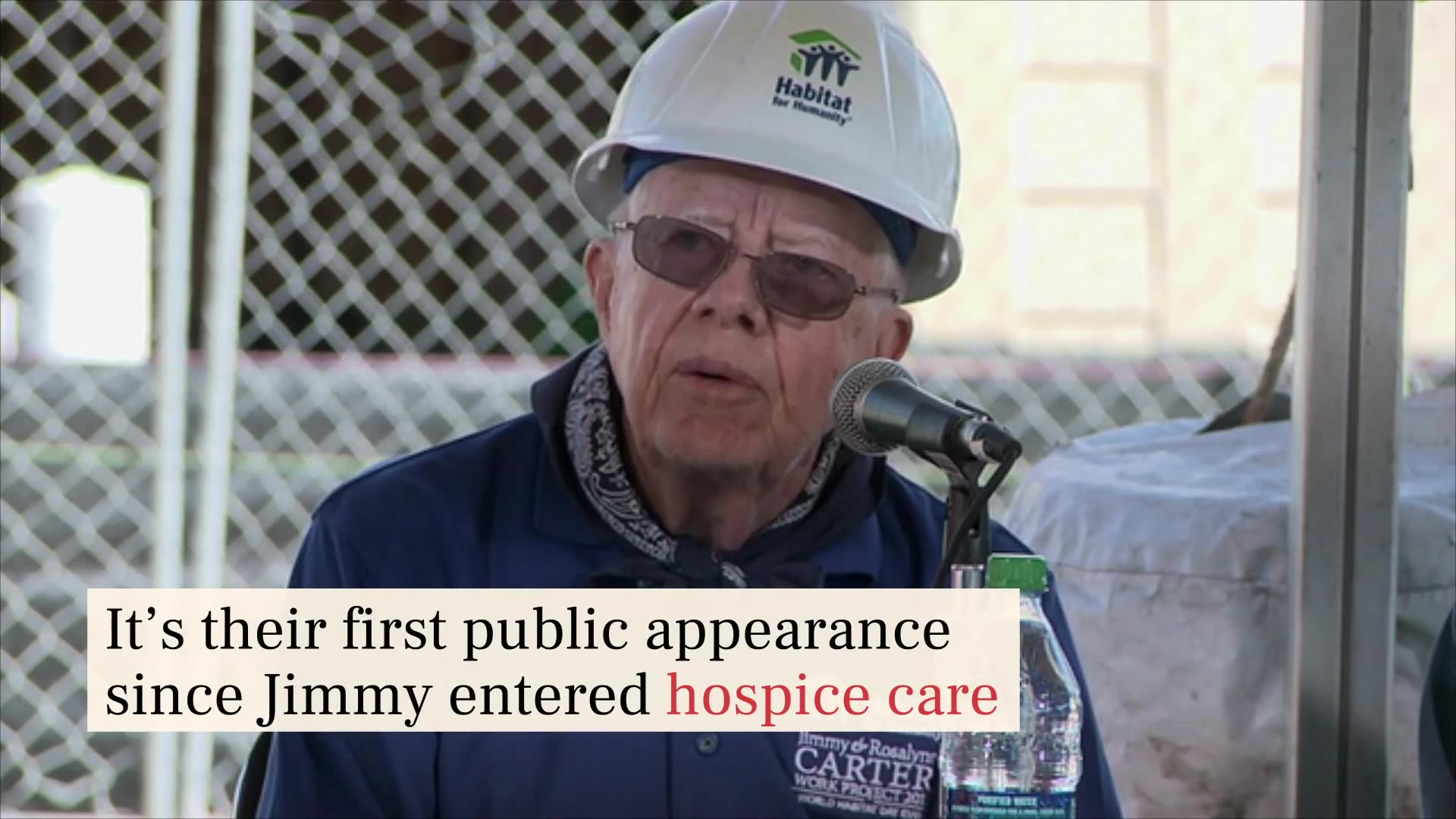Story by Diana Franchitto, Rhode Island Current •

Former President Jimmy Carter image by Nir Levy, Shutterstock© provided by AlterNet
Isaw a clip last month of President Jimmy Carter, now 99 years old, taking a ride with his wife through a peanut festival in their hometown. That’s a happy story for many reasons. As the former president approaches his eighth month on hospice care, it’s also a chance to clear up a common myth.
Back in February, when the president’s family announced he was ending curative treatments and beginning hospice, it was perhaps natural to assume he wouldn’t live much longer. Instead, President Carter has spent the better part of a year not just holding on, but truly living — in the ways that matter most to him, like with a celebratory drive beside his sweetheart.
Like many others, I was grateful to President Carter for publicly sharing his decision to begin hospice those many months ago, because it helped us raise awareness about this crucial type of care. Now, his long run on hospice gives us a chance to spotlight a truth that many find surprising: Some patients actually live longer on hospice.
We sense this regularly in our work at HopeHealth, as the region’s largest and oldest non-profit hospice and palliative care organization. We have the privilege of supporting patients and families through their final time together, and we care for patients who get an extra summer with their loved ones, who are able to attend that big family reunion, who defy all expectations and live long enough to meet their grandchild.
His long run on hospice gives us a chance to spotlight a truth that many find surprising: Some patients actually live longer on hospice.
Several landmark studies back up these personal observations with research, including a 2007 report in the Journal of Pain and Symptom Management00724-X/fulltext) and a 2018 report in the Journal of the American College of Cardiology: Heart Failure. These studies offer several theories for why patients may live longer on hospice than if they had remained on curative-focused care. In general, they come down to this: Hospice offers extra support at a time when it often matters most.
Related video: U.S. President Jimmy Carter turns 99! (WRBL Columbus)
Duration 1:58
View on Watch

Jimmy And Rosalynn Carter Make Rare Public Appearance At Hometown Peanut Festival
0:37

Jimmy Carter admirers across generations celebrate the former president's 99th birthday
0:27

Admirers celebrate Jimmy Carter's 99th birthday
1:14
For example, as part of his hospice care, President Carter has had access to experts who can help with difficult medical decisions, and coordinate between all his doctors. He has a doctor who specializes in making sure he is on the right medications to feel his best, and a medical team that comes out regularly for home visits, noticing and managing any problems early. If he experiences a difficult symptom at any time of day or night, his family can call a 24/7 nurse to come to his side, instead of rushing to the hospital. They have the extra support of a hospice aide for activities of daily living, so they can focus on quality time together. They have access to chaplains and social workers, for spiritual and emotional support.
Above all, President Carter and his family have a team who helps them identify and honor the ways they want to spend their precious time together — like, for example, a pleasant drive through a local peanut festival.
All of these services are available to every patient and family on hospice, not just former presidents. Whether it lasts months, weeks or days, that’s the value of this type of care: It helps us fill our final chapter with comfort, hope and meaning.
I know that President Carter’s final chapter will be every bit as full and meaningful as the life he lived. As in every other chapter, he is leading from the heart.
1:14
For example, as part of his hospice care, President Carter has had access to experts who can help with difficult medical decisions, and coordinate between all his doctors. He has a doctor who specializes in making sure he is on the right medications to feel his best, and a medical team that comes out regularly for home visits, noticing and managing any problems early. If he experiences a difficult symptom at any time of day or night, his family can call a 24/7 nurse to come to his side, instead of rushing to the hospital. They have the extra support of a hospice aide for activities of daily living, so they can focus on quality time together. They have access to chaplains and social workers, for spiritual and emotional support.
Above all, President Carter and his family have a team who helps them identify and honor the ways they want to spend their precious time together — like, for example, a pleasant drive through a local peanut festival.
All of these services are available to every patient and family on hospice, not just former presidents. Whether it lasts months, weeks or days, that’s the value of this type of care: It helps us fill our final chapter with comfort, hope and meaning.
I know that President Carter’s final chapter will be every bit as full and meaningful as the life he lived. As in every other chapter, he is leading from the heart.
No comments:
Post a Comment